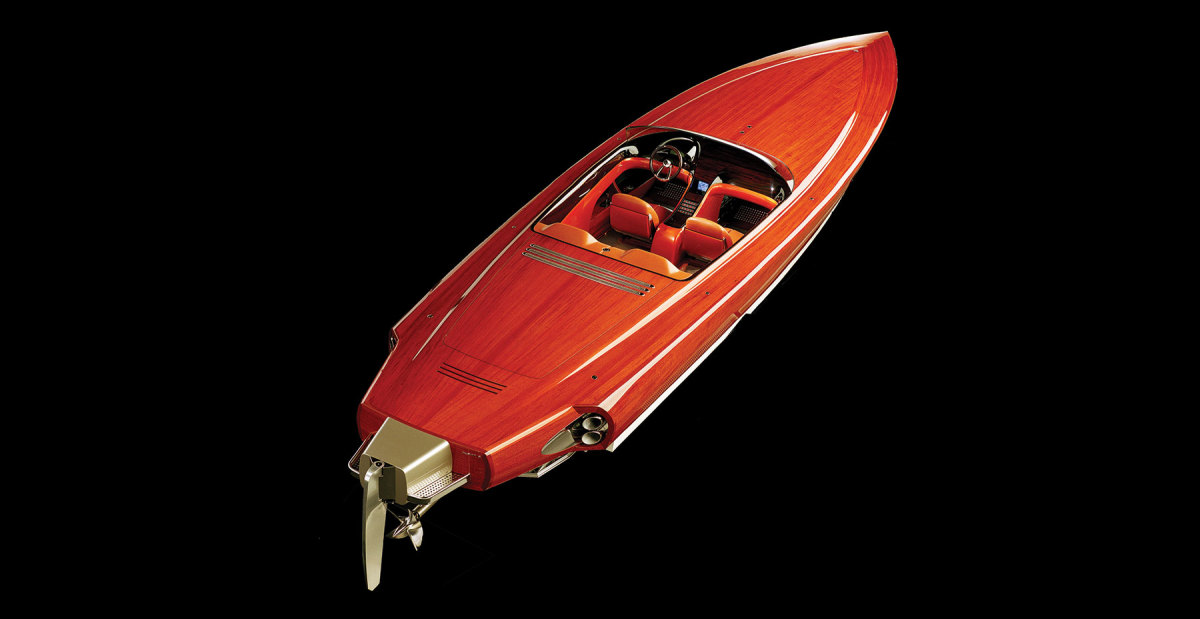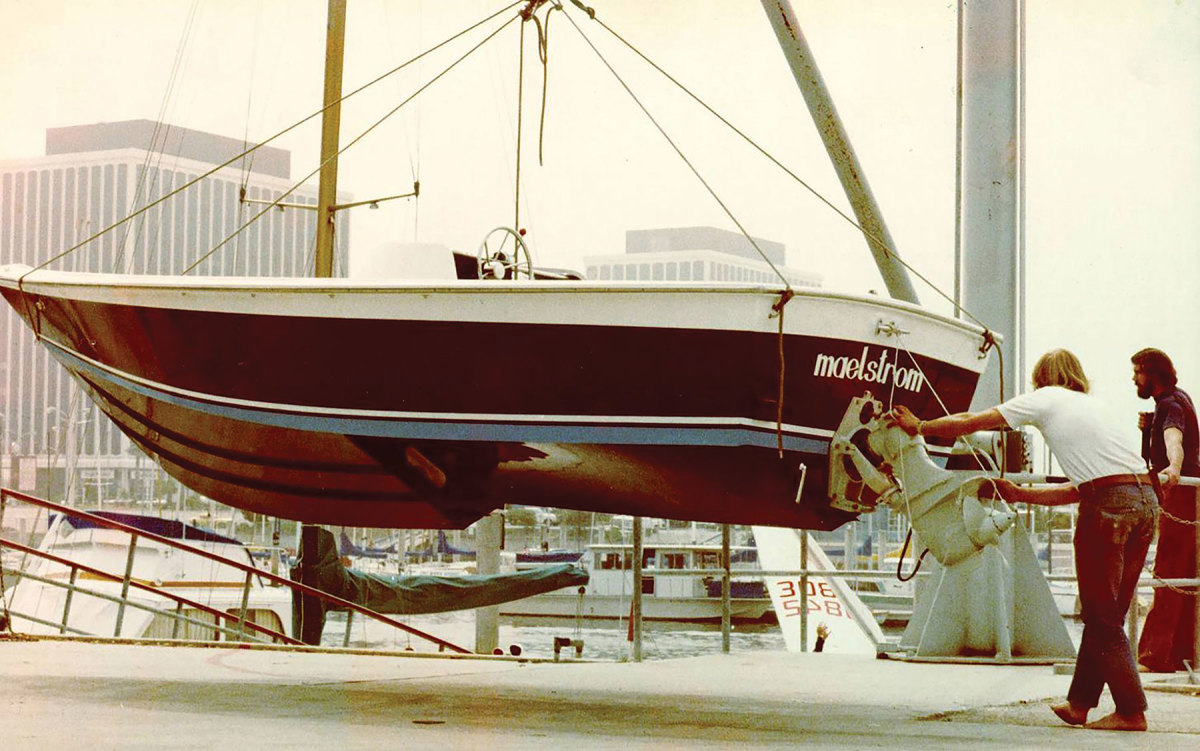Talkin’ Boats with Michael Peters
Talkin’ Boats with Michael Peters
Michael Peters is among the most renowned yacht designers in the world. His studio—Michael Peters Yacht Design in Sarasota, Florida—has collaborated with some of the biggest names in production boats—Azimut, Bertram, Chris-Craft, Hinckley and Valhalla Boatworks, to name a few—and created one-of-a-kind craft for blue-chip builders like Van Dam Custom Boats and Brooklin Boat Yard. When he’s not working, Peters and his family cruise aboard one of three Bertrams in the clan’s fleet. We talked with the designer for some perspective on boat design—past, present and future.
You’ve been a professional boat designer since the early 1970s. How many boats have you created over the course of your career? The firm is well into the 500s, with designs ranging from 20 to 160 feet. A lot of our work is in the 40- to 60-foot range. There’s not much activity in the 70- to 90-foot range right now. It’s hard to say why. The larger boats are coming from Europe, and we’re not as active there as we used to be.

Peters designed this 95-mph mahogany runabout for Van Dam Custom Boats.
When did you design your first boat? When I was 14. It was an 8-foot fiberglass sailing dinghy that I later destroyed by running it over with a tractor. I named it Miss Take, so you see I had a sense of humor as a kid. I think that boat turned me into a powerboat designer.
Of all the boats you’ve designed, which really stand out for you? Maelstrom, a little 19-footer I did when I was about 21. It was my first stepped hull, my breakthrough boat as it showed a lot of original thinking. I was trying to figure out how to do something different and then patent it. It took quite some time for that design to have an impact, but it became one of the reasons the marine industry shifted to stepped hulls 20 years after its development.
Why were you drawn to the concept of a stepped hull? I spent my childhood summers on Catalina Island. Back in those days seaplanes would ferry people out. In really rough water, they had to land in the lee of the island and taxi for a couple of miles on their hulls. These were Grumman Goose seaplanes. I was fascinated by how steady they ran. Later, I put two and two together and realized that one of the things that made them so steady was the stepped hull. Eventually, I dropped out of college at the University of Southern California, where I was an engineering student, to patent a stepped hull for powerboats. I was the first person to do it. That was a big milestone for me and became my introduction to the boating industry. I’ve always subscribed to the theory that young, foolish people create the major breakthroughs because they have nothing to lose.

The raceboat Iceberg
What’s the future for the stepped hull? I think it’s close to being mature. New solutions will eventually end up going down the same road. I say that because we saw it with the deep-V. Some designers started to go crazy with that hull shape, but then realized the existing design was the only one that really worked.
Are many powerboats running on stepped hulls today? The percentage is small, but the impact is noticeable, particularly in big, offshore center console boats. For my firm, the biggest thing we have going with stepped hulls is a five-year contract with the U.S. Navy, for which we design a series of 61-footers for the Seals. That’s a big deal for us and brings a lot of validity to our designs.
What was the next major breakthrough in your career? The race boat Iceberg for Norberto Ferretti. It was the first boat that incorporated advanced composites on the aerospace level, and I realized this was going to be the future. That boat did not win any championships, but it established a benchmark because it was a big leap beyond what other builders were doing.
Race boats brought you acclaim as a designer. What drew you to that segment? First, let me give you some perspective. When I first started designing race boats, the world record was 91 mph. When I was finished, the record was over 200 mph. While I don’t like to be stereotyped as a race boat designer, if you ask me about the boats that really broke barriers in terms of technology, I’ll say the race designs. I have a fantastic racing record with 20 world championships, but I wanted to do other things. I might try to leave racing in the past, but I can’t leave it out. It was so fundamental in my understanding of high-speed design and advanced composites.
You designed many great race boats, but did you ever race? I built one that I tested with my first wife. We rolled it over and almost killed ourselves that day. That was the end of my racing aspirations. I was not meant to be a crash test dummy.

Peters in 1981
How has racing changed since you first got into it? It’s gone through many different cycles. When I came of age, it was Cigarette, Aronow, Bertram, offshore boats and big water. When I got involved in the business, there was the transition between deep-V and catamaran. I did cats. Then the boats got faster and the courses changed and came closer to shore. In the mid-1980s, racing went from being an American sport to a European sport, where there’d be 30 boats at the starting line. That’s a huge number, and the crazy Italians would try anything that floated. And then it got to the point where the sport got very expensive. Only key teams could win; the other guys didn’t stand a chance. The sport finally petered out just a few years ago. I was there during some of the craziest times, though. And I also feel lucky to have known the people from the previous generation, the 1960s, when guys came back with their teeth knocked out and the cockpit bloody.
What person has had a profound impact on your career? Sal Guarino was vice president of design at Halter Marine in New Orleans when I worked there in my 20s. He’s a brilliant, self-taught designer with no naval architecture degree. An instinctive designer. He was an artist with a great eye and a real ability to work with new technology. He was my mentor. Another influential person was my best friend’s father, George Griffith. He had the original Cal 40 sailboat designed for himself. He treated me like a son, but I was nervous around him because I was afraid he’d quiz me. He was known in California as one of the top sailors of his generation. I designed an ultralight displacement boat for him in 1987 named Sarissa.
Have you ever designed a boat for yourself? It’s hard for designers to decide what to do for themselves, because the blank sheet is too big. I own three Bertrams, but I’ve personalized them. I tore everything out because I like pragmatic boats. My 25 Bertram built in 1971 is like an empty truck bed. I can do anything I want with it.
What boat surprises people when they learn it was designed by your firm? The Chris-Craft Launch and Corsair. Those boats were produced under the leadership of Stephen Julius after he brought the builder out of the OMC bankruptcy. The early stages of design began when Chris-Craft was still owned by OMC. The president of OMC had seen the 95-mph mahogany runabout Alpha Z I designed for Van Dam and said, “Hire that guy!” At the time, Chris-Craft had lost its way. We did a lot of work to really change its image. Bob Greenburg was the head of production at the time these boats were launched. He said to me, “Do you want to know how pretty those boats are? They even look good under shrink-wrap.”

Maelstrom featured the designer’s first stepped hull
Written by Jeanne Craig
Our Mission
While MPYD raceboats have made history and have established a worldwide reputation for Michael Peters Yacht Design, the company’s philosophy—to improve the performance and efficiency of every boat—permeates every project in the portfolio. Every custom yacht and series production boat has been designed to outperform its predecessor and to push the limits of engineering, style and function. Regardless of the boat’s purpose, each carries the same high quality standards that define Michael Peters Yacht Design.
Read More
- NEW Tribute 62
26 Mar, 2025
- First look at the 25m Hystream HS 80 catamaran yacht
24 Mar, 2025
- New Center Console Model for Sport and Fun
10 Dec, 2024